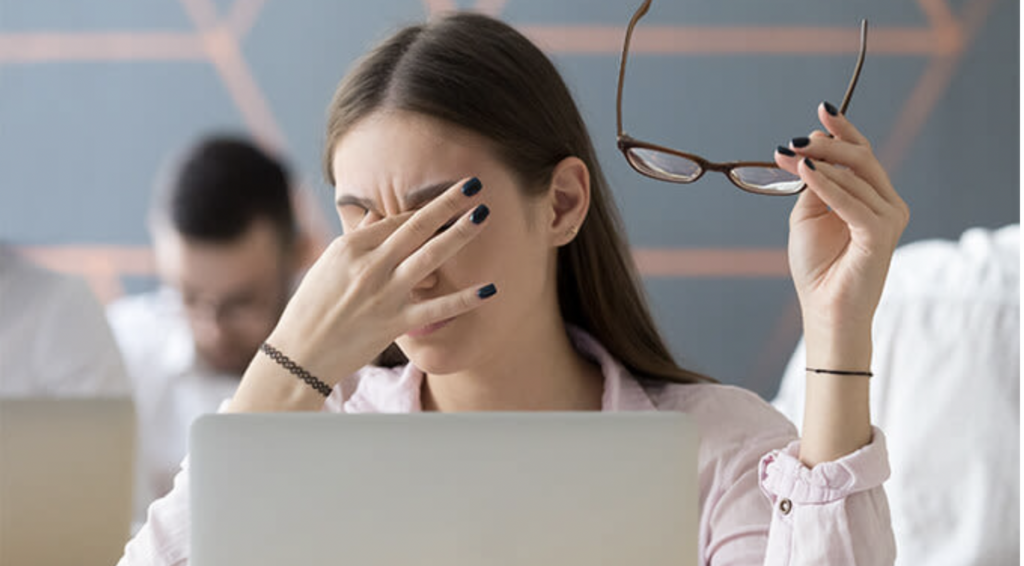In today’s fast-paced world, it’s no secret that we spend an increasing amount of time glued to our screens. Whether it’s for work, entertainment, or socializing, our phones and laptops have become indispensable tools in our daily lives. However, with this reliance on digital devices comes a hidden cost: the strain it puts on our eyes.
Think about your typical day. From the moment you wake up to the minute you go to bed, how much time do you spend staring at screens? For many of us, it’s a significant portion of our waking hours. We check our emails, scroll through social media feeds, attend virtual meetings, watch videos, and engage in countless other activities that require us to focus our gaze on digital displays.
While the convenience of modern technology is undeniable, it’s essential to recognize the toll it can take on our eye health. Extended periods of screen time can lead to a condition known as digital eye strain, also referred to as computer vision syndrome. Symptoms may include dry eyes, blurred vision, headaches, and neck and shoulder pain.
One of the primary reasons for this strain is the way we use our devices. Unlike reading a book or looking at a physical object, staring at screens requires our eyes to work harder. The high-intensity blue light emitted by screens can also contribute to eye fatigue and disrupt our sleep patterns.

For those who work from home, the situation may be even more pronounced. Remote work often means spending entire days in front of a computer, with limited breaks and little opportunity to give our eyes a rest. Without the structure of a traditional office environment, it’s easy to lose track of time and neglect our eye health in the process.
That’s why regular eye check-ups are crucial, especially for those who spend a significant amount of time on digital devices. An optometrist can assess your vision and screen habits, providing personalized recommendations to help alleviate eye strain and prevent long-term damage.
During an eye exam, your optometrist can detect early signs of conditions such as myopia (nearsightedness), hyperopia (farsightedness), and astigmatism. They can also discuss strategies for reducing digital eye strain, such as the 20-20-20 rule: every 20 minutes, take a 20-second break and look at something 20 feet away.
In addition to regular check-ups, there are steps you can take on your own to protect your eyes while using digital devices:
- Adjust the brightness and contrast of your screens to reduce glare.
- Position your screen at eye level and maintain a comfortable viewing distance.
- Use artificial tears or eye drops to keep your eyes moist.
- Take frequent breaks to rest your eyes and stretch your neck and shoulders.
Remember, your eyes are precious, and taking care of them is essential for maintaining your overall well-being. Don’t wait until you experience discomfort or vision problems to seek help. Schedule an eye exam today and invest in the health of your eyes for years to come. Your future self will thank you.
Please do not hesitate to contact us by phone (365-675-5310), email ([email protected]) or book an appointment online. (https://waterdownoptometric.ca/book-appointment/).



